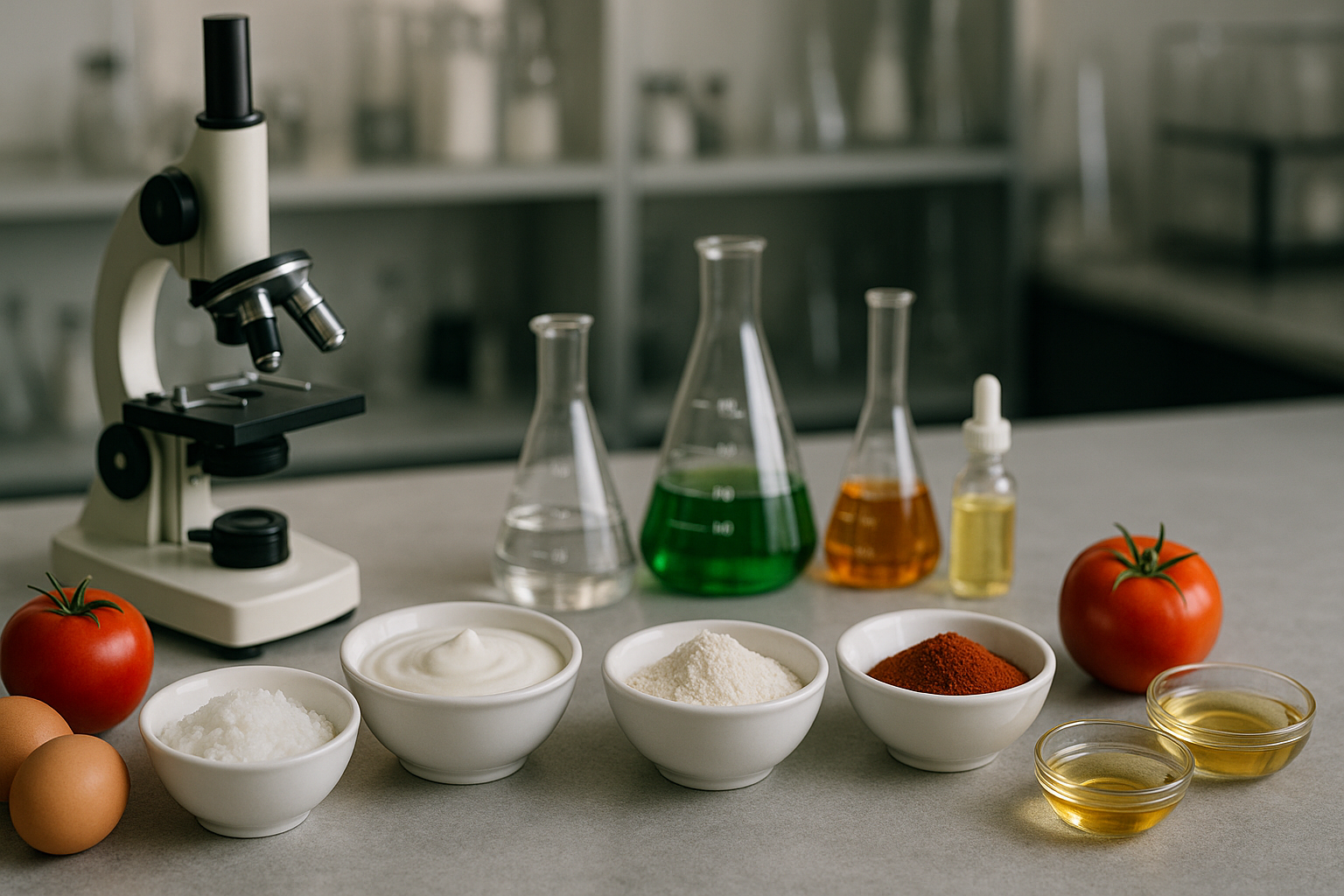Trending searches
Trending searches

Hydrocolloid: Gum Arabic
SUBSCRIBE TO OUR BLOG
Promotions, new products, and recipes.
Gum Arabic: The Ancient Resin with Modern Culinary Applications
Gum Arabic, also known as acacia gum, is a natural gum derived from the hardened sap of the acacia tree. Renowned for its emulsifying and stabilizing properties, Gum Arabic has been a treasured ingredient for millennia. But what's the scientific rationale behind this hydrocolloid's behavior, and how has it been seamlessly integrated into contemporary cuisine?
Historical Context
Gum Arabic's use dates back to ancient Egyptian times, where it was employed in various applications, from paint production to food preservation1.
The Molecular Science of Gum Arabic
Gum Arabic is a complex polysaccharide mixture, primarily composed of arabinogalactan proteins2. Its unique molecular structure allows it to act as an effective emulsifier, stabilizing oil-in-water mixtures.
Extraction and Refinement
Gum Arabic is harvested by making incisions in the bark of specific Acacia species, primarily Acacia senegal and Acacia seyal. The exuded gum is then collected, purified, and processed into a fine powder3.
A Multifaceted Ingredient
Gum Arabic's versatility is evident in its wide range of applications:
-
Food Industry: Used as an emulsifier, stabilizer, and thickener in various food products4.
-
Beverage Industry: Employed as a stabilizer in soft drinks and as a clarifying agent in winemaking5.
-
Pharmaceuticals: Incorporated as a binder and emulsifying agent in drug formulations6.
Gum Arabic in Culinary Creations - Proportions
Gum Arabic's culinary proportions are dictated by its emulsifying and stabilizing capabilities:
-
Confectionery (like Hard Candies or Marshmallows):
- Proportion: 5% to 15% of the total weight7.
- Purpose: Provides texture and prevents crystallization.
-
Beverages (like Soft Drinks or Syrups):
- Proportion: 10% to 25% of the total weight8.
- Purpose: Acts as a stabilizer and enhances mouthfeel.
-
Sauces and Dressings:
- Proportion: 5% to 10% of the total weight9.
- Purpose: Emulsifies and stabilizes oil-in-water mixtures.
-
Baked Goods:
- Proportion: 1% to 3% of the total weight10.
- Purpose: Improves texture and shelf life.
Conclusion
Gum Arabic, with its historical significance and unique molecular properties, continues to be a valuable ingredient in modern gastronomy. Its role across various industries, especially in the culinary world, underscores its adaptability and importance. As the intersection of culinary arts and food science deepens, Gum Arabic's prominence is set to soar.
For further reading Konjac Gum
References:
Footnotes
-
Anderson, D.M.W., & Weiping, W. "The production and uses of gum Arabic." Food Additives & Contaminants, 1992. ↩
-
Phillips, G.O., & Williams, P.A. ""Handbook of Hydrocolloids." Woodhead Publishing, 2009. ↩
-
Verbeken, D., et al. "Exudate gums: occurrence, production, and applications." Applied Microbiology and Biotechnology, 2003. ↩
-
Imeson, A. "Food Stabilisers, Thickeners and Gelling Agents." Wiley-Blackwell, 2009. ↩
-
Boulton, R. "The coproduction of ethanol and mannoproteins by several wine strains of Saccharomyces cerevisiae." American Journal of Enology and Viticulture, 1996. ↩
-
Aulton, M.E., & Taylor, K.M.G. "Aulton's Pharmaceutics: The Design and Manufacture of Medicines." Elsevier Health Sciences, 2017. ↩
-
Edwards, W.P. "The Science of Sugar Confectionery." Royal Society of Chemistry, 2000. ↩
-
Ashurst, P.R. "Chemistry and Technology of Soft Drinks and Fruit Juices." Wiley-Blackwell, 2016. ↩
-
Davidson, R.L. "Handbook of Water-Soluble Gums and Resins." McGraw-Hill, 1980. ↩
-
Moore, M.M., et al. "The effects of hydrocolloids on the quality of gluten-free bread." Food Research International, 2008.


|
About the Author Ed is the founder of Cape Crystal Brands, editor of the Beginner’s Guide to Hydrocolloids, and a passionate advocate for making food science accessible to all. Discover premium ingredients, expert resources, and free formulation tools at capecrystalbrands.com/tools. — Ed |
Related Posts

The Most Powerful Food Science Questions Journalists Are Asking Today

Inside the Pumpkin Latte: What’s Really in Your Cup (and a Better Homemade Version)

Breaking Bread: Rediscovering the Health Benefits of Bread Beyond the Myths
Enjoyed this post? Subscribe to The Crystal Scoop
Food-science tips, ingredient know-how, and recipes. No spam—unsubscribe anytime.
- Choosing a selection results in a full page refresh.
POLICY PAGES
QUICK LINKS
Guar Gum
Cape Crystal Brands, 18 Bank St., Suite 1, Summit NJ 07901.
- Phone: +1 908-273-5600
- Email: info@capecrystalbrands.com
- Tax ID: 26-2477626000
- FDA Facility Registration # 16980627550
- Kosher Certified: OKosher.org
Country/region
© 2025, Cape Crystal Brands | Sitemap
